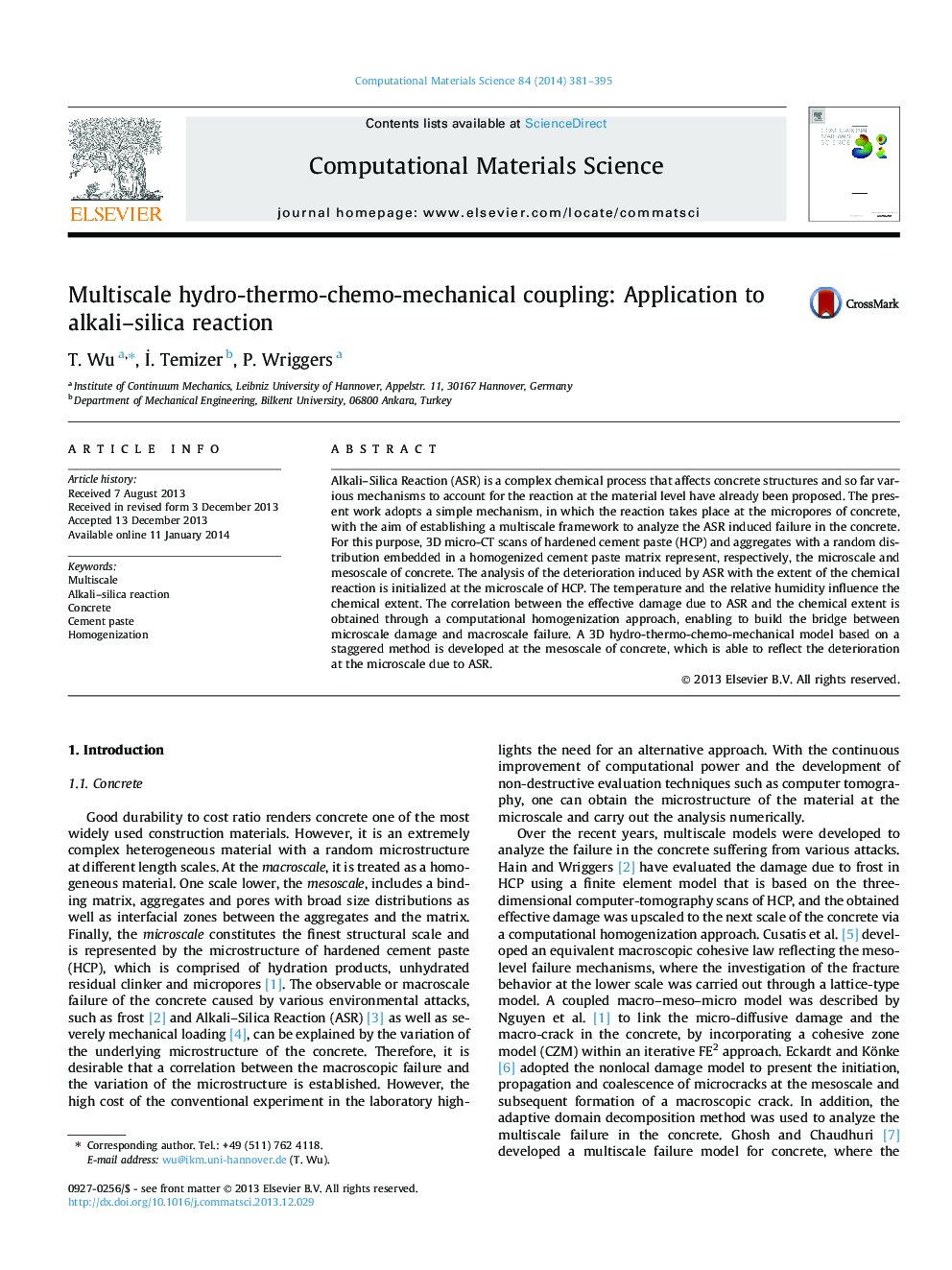| Article ID | Journal | Published Year | Pages | File Type |
|---|---|---|---|---|
| 7960821 | Computational Materials Science | 2014 | 15 Pages |
Abstract
Alkali-Silica Reaction (ASR) is a complex chemical process that affects concrete structures and so far various mechanisms to account for the reaction at the material level have already been proposed. The present work adopts a simple mechanism, in which the reaction takes place at the micropores of concrete, with the aim of establishing a multiscale framework to analyze the ASR induced failure in the concrete. For this purpose, 3D micro-CT scans of hardened cement paste (HCP) and aggregates with a random distribution embedded in a homogenized cement paste matrix represent, respectively, the microscale and mesoscale of concrete. The analysis of the deterioration induced by ASR with the extent of the chemical reaction is initialized at the microscale of HCP. The temperature and the relative humidity influence the chemical extent. The correlation between the effective damage due to ASR and the chemical extent is obtained through a computational homogenization approach, enabling to build the bridge between microscale damage and macroscale failure. A 3D hydro-thermo-chemo-mechanical model based on a staggered method is developed at the mesoscale of concrete, which is able to reflect the deterioration at the microscale due to ASR.
Related Topics
Physical Sciences and Engineering
Engineering
Computational Mechanics
Authors
T. Wu, Ä°. Temizer, P. Wriggers,
